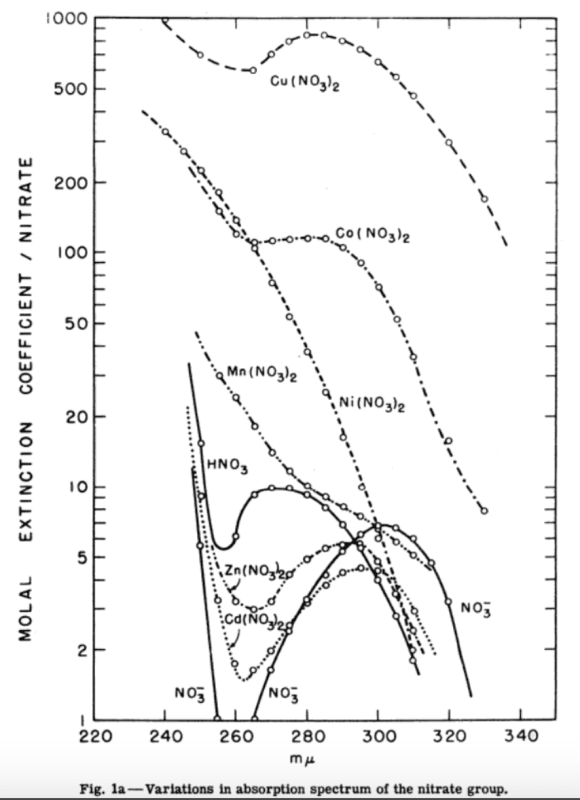jeremy_rutman
Mechanical
- Oct 3, 2016
- 4
I’d like to check for nitrate levels using online optic system.
Nitrates (NO3-) in liquid absorb mostly around 220nm , most water quality devices looking for nitrate check around there.
I found a ~20$ diode that detects down to 215nm.
I can compare the diode signal thru ‘bad’ water with signal thru clean water and subtract but a lot of signal is shared thru both samples (last fig shows both detector response (blue) and nitrate abs (orange) curves)
So I thought to try to limit the source freq. to eg. 240 or below.
There are some specialty LEDs that transmit at around 240 but the’yre around 300$.
So I thought maybe I can frequency-triple a 632nm, HeNe laser , but the crystals involved (BBO,LBO) seem to also be a few hundred $.
I could also try a diffraction grating to select around 220nm from a Xe flashlamp but I’m not sure which kind of grating , they do seem cheap.
Can someone recommend which grating I want (lines/mm and kind of blaze seem to affect efficiency vs wavelength) or an alternate approach.



Nitrates (NO3-) in liquid absorb mostly around 220nm , most water quality devices looking for nitrate check around there.
I found a ~20$ diode that detects down to 215nm.
I can compare the diode signal thru ‘bad’ water with signal thru clean water and subtract but a lot of signal is shared thru both samples (last fig shows both detector response (blue) and nitrate abs (orange) curves)
So I thought to try to limit the source freq. to eg. 240 or below.
There are some specialty LEDs that transmit at around 240 but the’yre around 300$.
So I thought maybe I can frequency-triple a 632nm, HeNe laser , but the crystals involved (BBO,LBO) seem to also be a few hundred $.
I could also try a diffraction grating to select around 220nm from a Xe flashlamp but I’m not sure which kind of grating , they do seem cheap.
Can someone recommend which grating I want (lines/mm and kind of blaze seem to affect efficiency vs wavelength) or an alternate approach.



